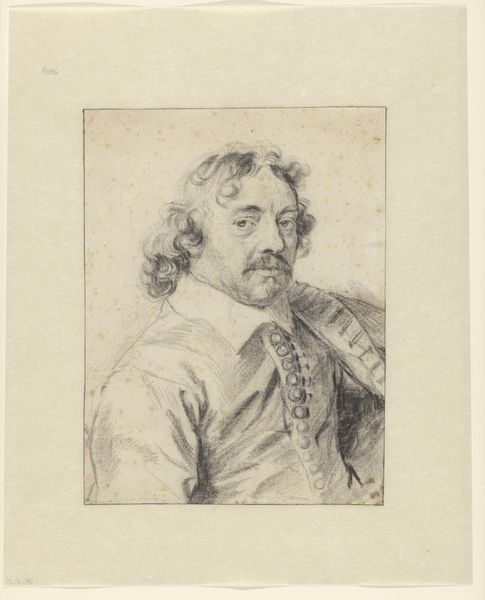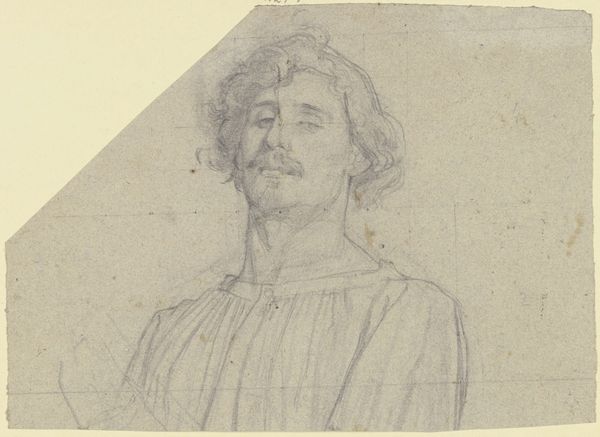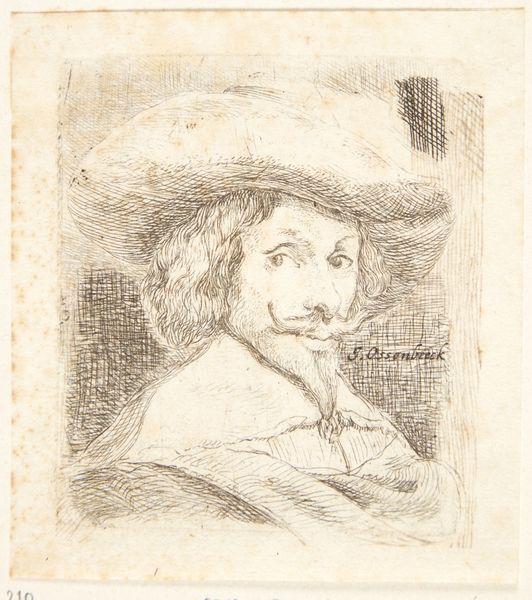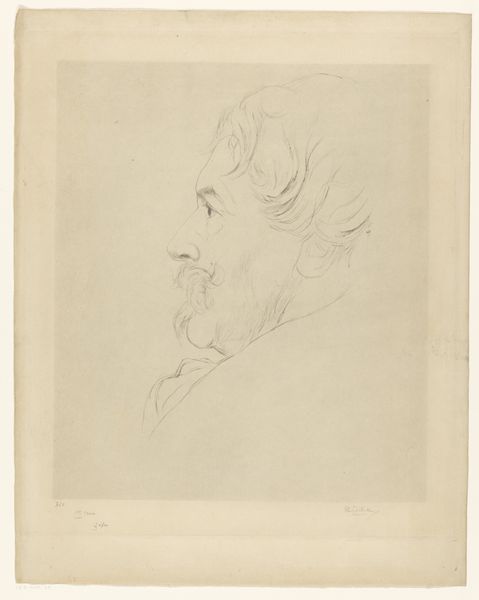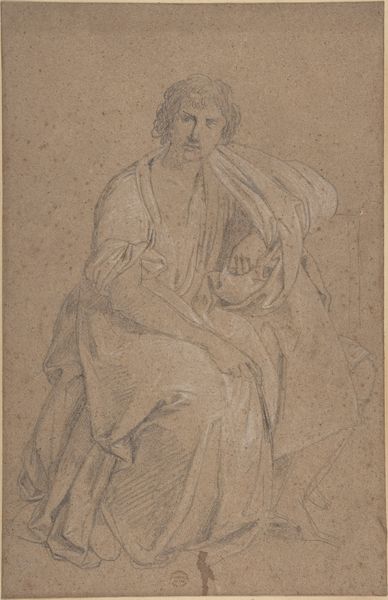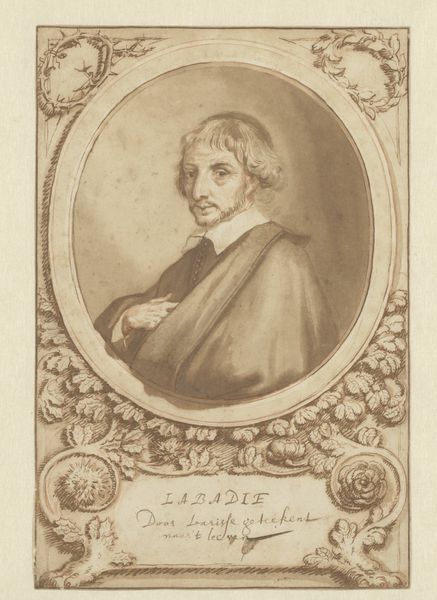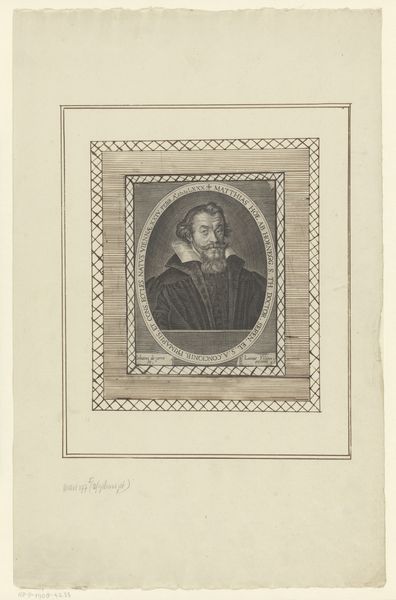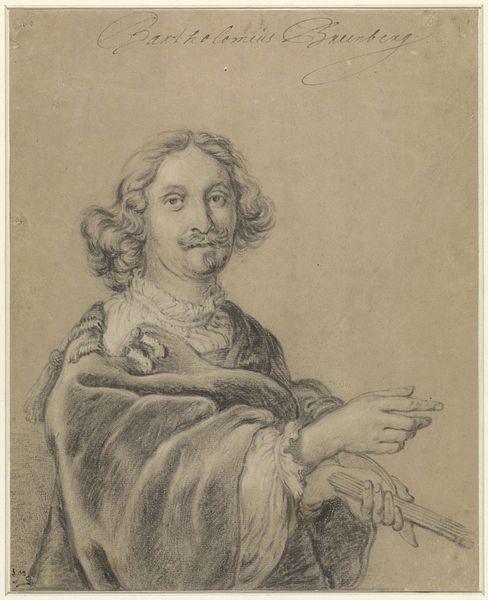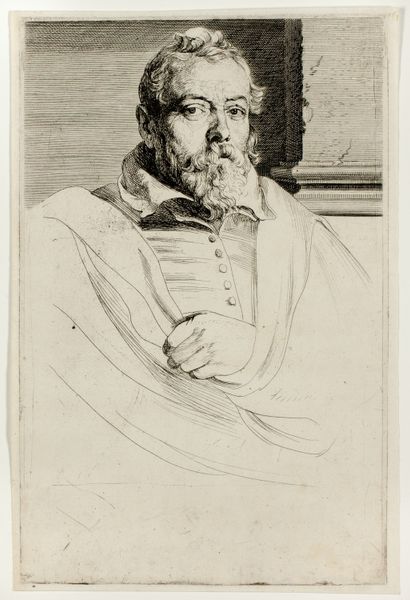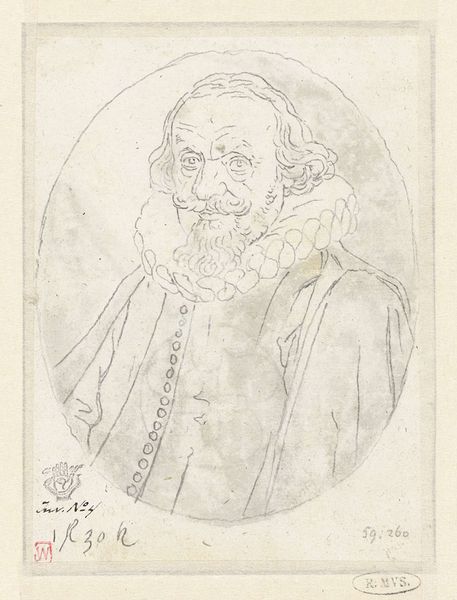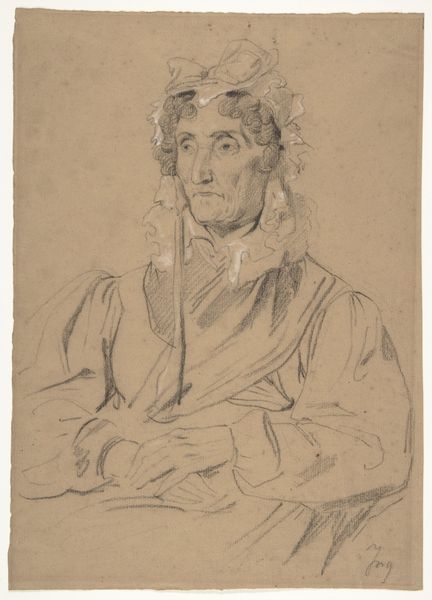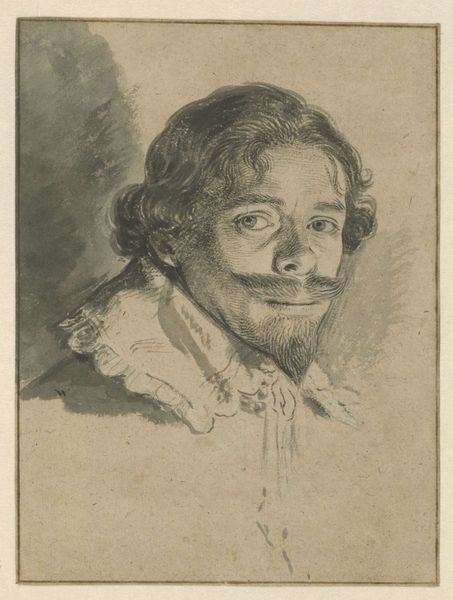
#
pencil drawn
#
toned paper
#
light pencil work
#
pencil sketch
#
old engraving style
#
personal sketchbook
#
pen-ink sketch
#
pen work
#
portrait drawing
#
pencil work
Dimensions: height 152 mm, width 118 mm
Copyright: Rijks Museum: Open Domain
Curator: Before us we have Frederik Hendrik Weissenbruch's "Portret van Jean de Labadie," dating from sometime between 1838 and 1887, housed right here at the Rijksmuseum. Editor: There's an immediate sensitivity in this work, a rawness even. The quick, light pencil strokes suggest an intimacy, a glimpse into the sitter’s…soul, almost? Curator: Absolutely. This is rendered primarily in pencil, likely a preparatory sketch. Labadie's historical context is quite charged: a 17th-century French pietist whose radical Protestant beliefs placed him at odds with mainstream religious institutions. The very act of portrayal could be seen as defiance. Editor: Fascinating. I notice the garland that frames his portrait. It is not of lush flowers or celebratory laurel, but rather appears more akin to… perhaps thistles or some thorny plant. Could this be a symbolic gesture, referencing the "thorns" of his controversial views, the suffering his beliefs may have engendered? Curator: That's astute. The use of austere foliage within what should be an honorific frame adds layers to the reading of this individual. Was Weissenbruch alluding to the ostracization Labadie experienced? What I find crucial, too, is the quietness with which it does so. No grandstanding. It’s in the details, this subversion. Editor: And in the expression, too. There is weariness there, but also resolve. It transcends mere physical likeness and ventures into conveying character. I keep coming back to the eyes... they have witnessed a lot. Curator: Yes, and Weissenbruch created that impression with minimal means, mostly a simple pencil on toned paper, showing a striking example of an economy of expression and a mastery of conveying profound emotion within tight parameters. I think Weissenbruch’s “Portret van Jean de Labadie” makes us examine how a drawing on toned paper from the 1800's can speak to today's societal tensions. Editor: A subtle yet powerful reminder that the seeds of social change are often sown in quiet acts of defiance, meticulously rendered with charcoal and graphite. Curator: And how crucial is to learn from symbols to have conversations around identities and race.
Comments
No comments
Be the first to comment and join the conversation on the ultimate creative platform.
